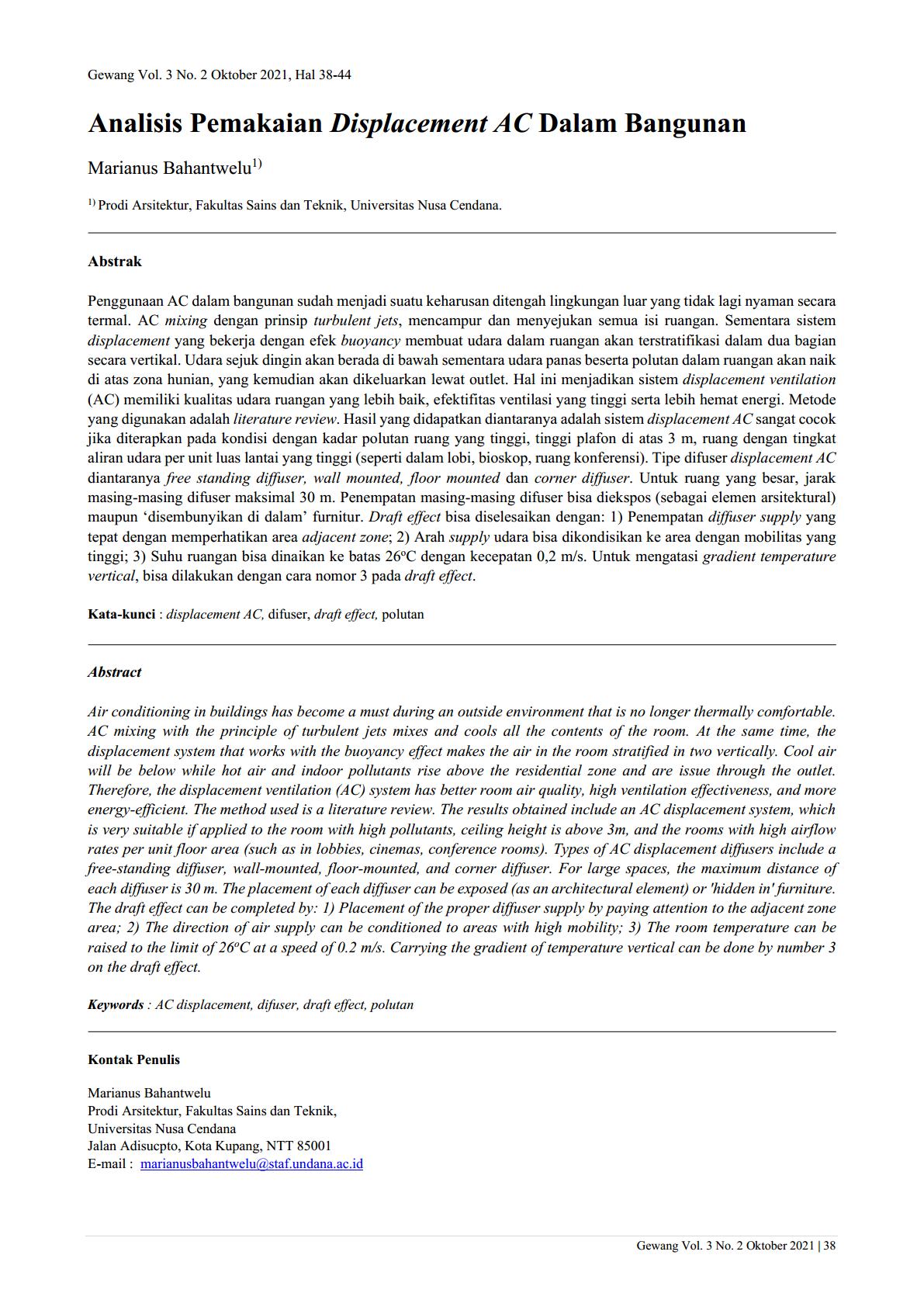Analisis Pemakaian Displacement AC Dalam Bangunan
Main Article Content
Abstract
Air conditioning in buildings has become a must during an outside environment that is no longer thermally comfortable. AC mixing with the principle of turbulent jets mixes and cools all the contents of the room. At the same time, the displacement system that works with the buoyancy effect makes the air in the room stratified in two vertically. Cool air will be below while hot air and indoor pollutants rise above the residential zone and are issue through the outlet. Therefore, the displacement ventilation (AC) system has better room air quality, high ventilation effectiveness, and more energy-efficient. The method used is a literature review. The results obtained include an AC displacement system, which is very suitable if applied to the room with high pollutants, ceiling height is above 3m, and the rooms with high airflow rates per unit floor area (such as in lobbies, cinemas, conference rooms). Types of AC displacement diffusers include a free-standing diffuser, wall-mounted, floor-mounted, and corner diffuser. For large spaces, the maximum distance of each diffuser is 30 m. The placement of each diffuser can be exposed (as an architectural element) or 'hidden in' furniture. The draft effect can be completed by: 1) Placement of the proper diffuser supply by paying attention to the adjacent zone area; 2) The direction of air supply can be conditioned to areas with high mobility; 3) The room temperature can be raised to the limit of 26oC at a speed of 0.2 m/s. Carrying the gradient of temperature vertical can be done by number 3 on the draft effect.
Downloads
Article Details
This license enables reusers to distribute, remix, adapt, and build upon the material in any medium or format, so long as attribution is given to the creator. The license allows for commercial use

